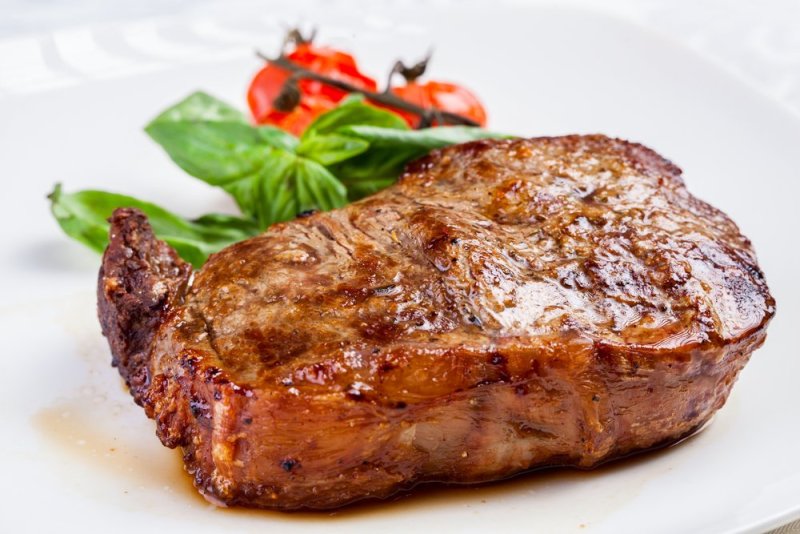Pan seared steak is a revered method of cooking, but there’s a new way of preparing steak that is taking the culinary world by storm – the reverse sear. If you’ve ever had top notch restaurant quality steak, then you know just how delicious a flawless seared steak can taste. Unlike searing on high-heat on the stove, then transferring the meat to the oven to be cooked on a lower setting until done, reverse seared steak involves gently cooking in the oven, then transferred to an intensely hot pan to be seared until crisp, tender perfection. However, if you have a faulty alarm system that goes off at the slightest hint of heat, there is a method to the madness and you don’t have to succumb to the heat of summer grilling to necessarily whip up the perfectly prepared seared steak.
How To Select A Quality Steak

The key to selecting the ideal steak is really a matter of personal preference and getting to know your local butcher. However, if you’d like to try your hand at applying your own knowledge, the basic principle of choosing the best meat lies in going with the most tender cuts, which also happen to be the most expensive, and due to the high fat content, will cook more efficiently, is more palatable, and lends a rich flavor. On the other hand, if you’d like the most bank for your buck on a tight budget, boneless rib-eye, top round, flank steak, and bottom sirloin are all great options to choose from.
Reverse Searing Preparation

GCapture/Shutterstock
The reverse searing method cooks a steak more evenly than the traditional searing technique. Unlike the original way of searing that entails slow cooking the meat after the outside has been pan-fried, the new way of doing so involves ensuring that the steak is evenly cooked throughout, prior to exposing it to high heat. The reverse searing method works exceptionally well for thicker cuts of steak and you won’t get layered levels of doneness, but instead, an evenly finished inside that is nice and juicy, paired with a robust and caramelized outside.
Even with just a sprinkle of salt and pepper, your steak can come out very flavorful, but with the array of rubs and marinades available, the taste will be next level. More importantly, it’s the technique that brings out the aroma, browning, and flavor combinations, also known as the Maillard Reaction. This combination lends the most robust taste that showcases the seasonings and the meat’s natural quality at just the right temperature. In order to ace the coveted reverse sear, be sure that the pan that you are using is so hot that even a drop of water stands no chance, immediately evaporating, with virtually no room to boil. Not having the pan hot enough could result in meat that takes too long to cook, a rubbery layer, and burnt ends.

What You’ll Need
- A 1 inch thick steak
- Salt and pepper
- 1-2 tablespoons of butter or cooking oil (or both!)
- Herbs and spices (optional)

Rawpixel.com/Shutterstock
What To Do
1. Place the seasoned steak onto an oven-proof rack, above a baking tray that is covered in foil, to avoid spillage.
2. Bake for about 45-60 minutes in the oven until there is an internal temperature of approximately 125 degrees. You may need to obtain a meat thermometer to ensure that the steak is adequately cooked on the inside.
3. After the steak is cooked, remove it from the oven and allow the meat to sit for at least 10 to 15 minutes under a sheet of foil.
4. Preheat a skillet to a scalding high heat temperature. Then, melt the butter or a cooking oil that has a high smoke point, such as canola, safflower, soy or peanut oil. About 1 or 2 tablespoons goes a long way.
5. Immediately apply the steak and sear it on each side for about 2 to 3 minutes. Once the outside obtains a brown coloring with a bubbling exterior, slice and serve.
The reverse searing method is a great way to obtain restaurant quality taste. Even if you aren’t the most seasoned cook, this simplistic recipe will create the most decadent taste without complication. Forget the grill, Keep this recipe on hand for your next feast and be amazed each and every time.
